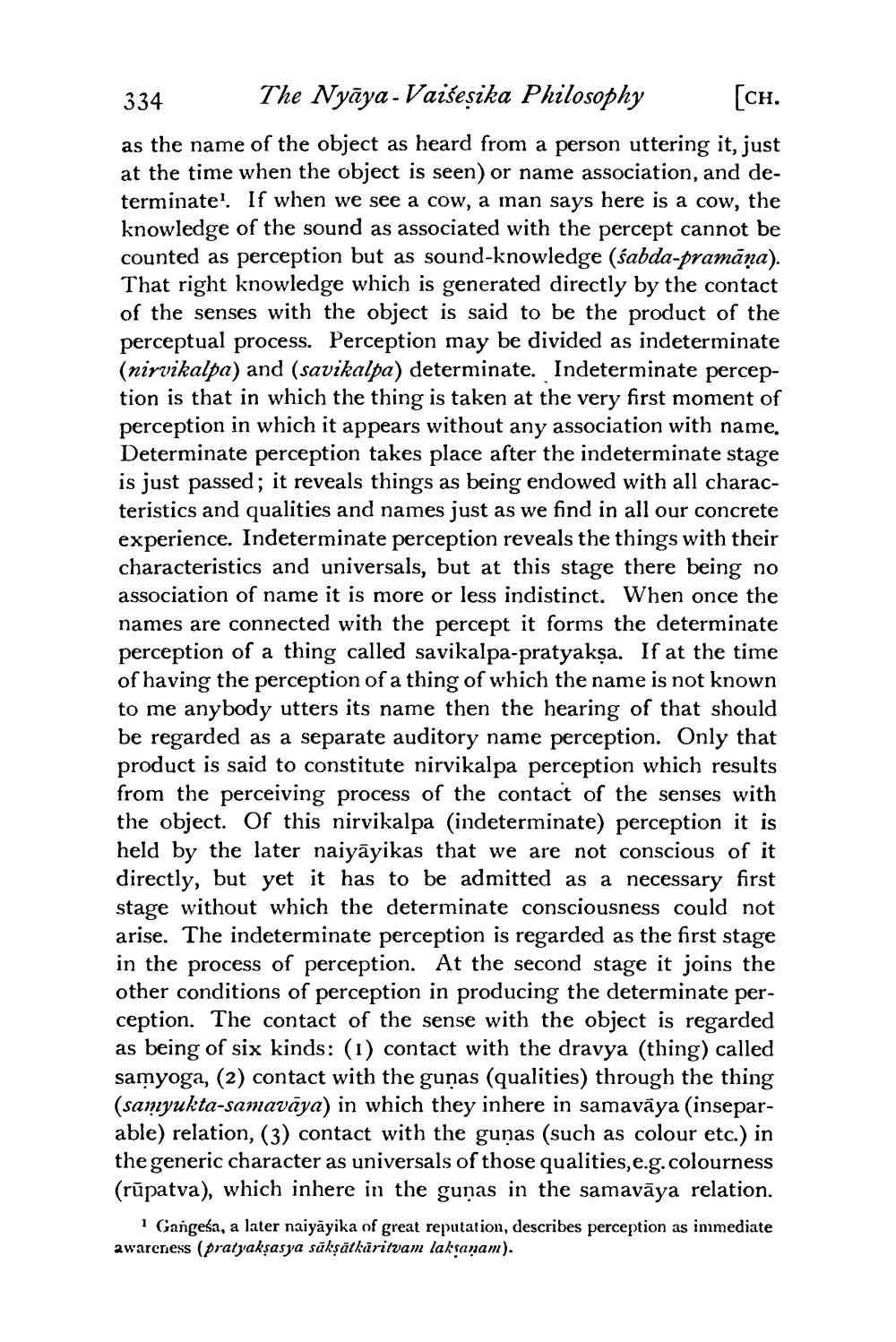________________
334
The Nyāya-Vaiseșika Philosophy [CH. as the name of the object as heard from a person uttering it, just at the time when the object is seen) or name association, and determinate! If when we see a cow, a man says here is a cow, the knowledge of the sound as associated with the percept cannot be counted as perception but as sound-knowledge (sabda-pramāņa). That right knowledge which is generated directly by the contact of the senses with the object is said to be the product of the perceptual process. Perception may be divided as indeterminate (nirvikalpa) and (savikalpa) determinate. Indeterminate perception is that in which the thing is taken at the very first moment of perception in which it appears without any association with name. Determinate perception takes place after the indeterminate stage is just passed; it reveals things as being endowed with all characteristics and qualities and names just as we find in all our concrete experience. Indeterminate perception reveals the things with their characteristics and universals, but at this stage there being no association of name it is more or less indistinct. When once the names are connected with the percept it forms the determinate perception of a thing called savikalpa-pratyaksa. If at the time of having the perception of a thing of which the name is not known to me anybody utters its name then the hearing of that should be regarded as a separate auditory name perception. Only that product is said to constitute nirvikalpa perception which results from the perceiving process of the contact of the senses with the object. Of this nirvikalpa (indeterminate) perception it is held he later naiyāyikas that we are not conscious of it directly, but yet it has to be admitted as a necessary first stage without which the determinate consciousness could not arise. The indeterminate perception is regarded as the first stage in the process of perception. At the second stage it joins the other conditions of perception in producing the determinate perception. The contact of the sense with the object is regarded as being of six kinds: (1) contact with the dravya (thing) called samyoga, (2) contact with the gunas (qualities) through the thing (samyukta-samavāya) in which they inhere in samavāya (inseparable) relation, (3) contact with the gunas (such as colour etc.) in the generic character as universals of those qualities,e.g.colourness (rūpatva), which inhere in the gunas in the samavāya relation.
Gangeća, a later naiyāyika of great reputation, describes perception as immediate awareness (pratyakşasya sāksātkāritvam laksanam).




